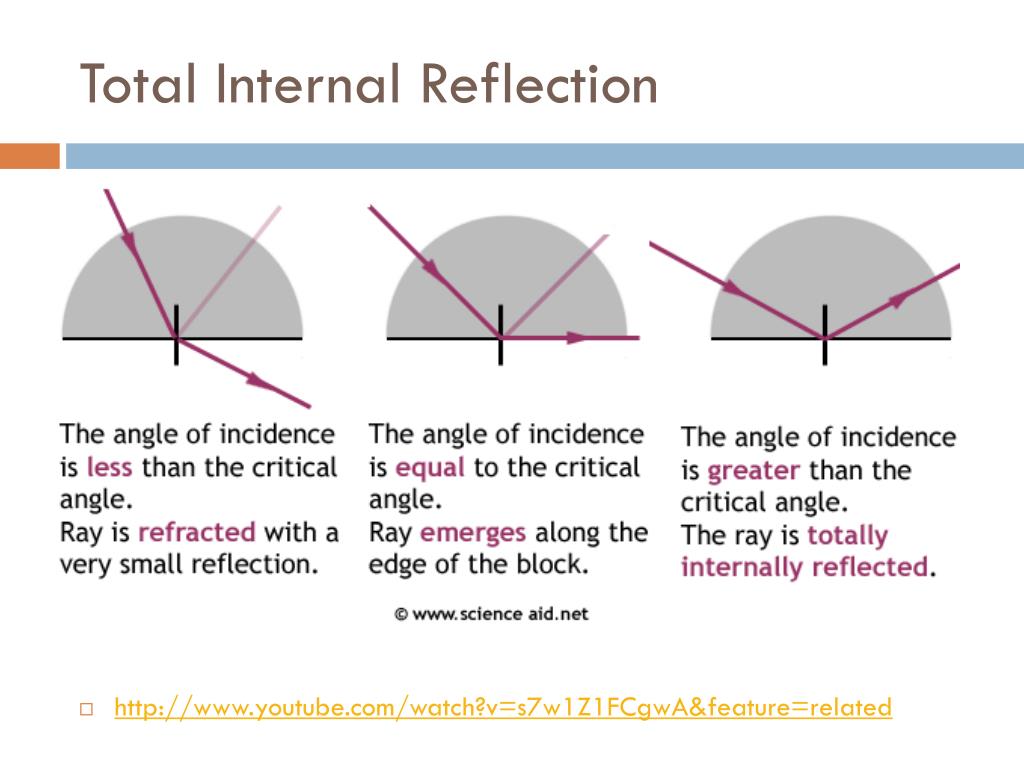
Total internal reflection, coupled with a large index of refraction, explains why diamonds sparkle more than other materials. These binoculars employ corner reflectors with total internal reflection to get light to the observer’s eyes. When total internal reflection occurs at the interface of two mediums with different refractive indices, a portion of light (evanescent wave) penetrates the. Total internal reflection is a phenomenon of light that occurs when the angle between the incident light and the normal of the boundary 1 is greater than the. Another use is in periscopes found in submarines. One use of these perfect mirrors is in binoculars, as shown in Figure 6. This phenomenon, called total internal reflection, is commonly taken advantage of to pipe light in a curved path. Total internal reflection (ESBNB) light is travelling from an optically denser medium (higher refractive index) to an optically less dense medium (lower. If, as shown in the figure, the index of refraction for the second medium is less than for the first, the ray bends away from the perpendicular. Part of the light crosses the boundary and is refracted the rest is reflected. Interestingly, we can produce total reflection using an aspect of refraction.Ĭonsider what happens when a ray of light strikes the surface between two materials, such as is shown in Figure 1(a). But it would be useful to have a mirror that reflects all of the light that falls on it. Analyze the reason for the sparkle of diamonds.Ī good-quality mirror may reflect more than 90% of the light that falls on it, absorbing the rest.the angle of incidence is greater than the so-called critical angle. Total internal reflection is a phenomenon that occurs at the boundary between two mediums, such that if the incident angle in the first medium is greater than the critical angle, then all the light is reflected back into that medium. TIR only takes place when both of the following two conditions are met: the light is in the more dense medium and approaching the less dense medium. Describe the workings and uses of fiber optics. Total internal reflection (TIR) is the phenomenon that involves the reflection of all the incident light off the boundary.


Explain the phenomenon of total internal reflection. The Total Internal Reflection Concept Builder includes three activities that target student understanding of the requirements for total internal reflection. Light incident on a planar semiconductor-air or semiconductor-encapsulant interface is totally internally reflected if the angle of incidence is larger than a.


 0 kommentar(er)
0 kommentar(er)
